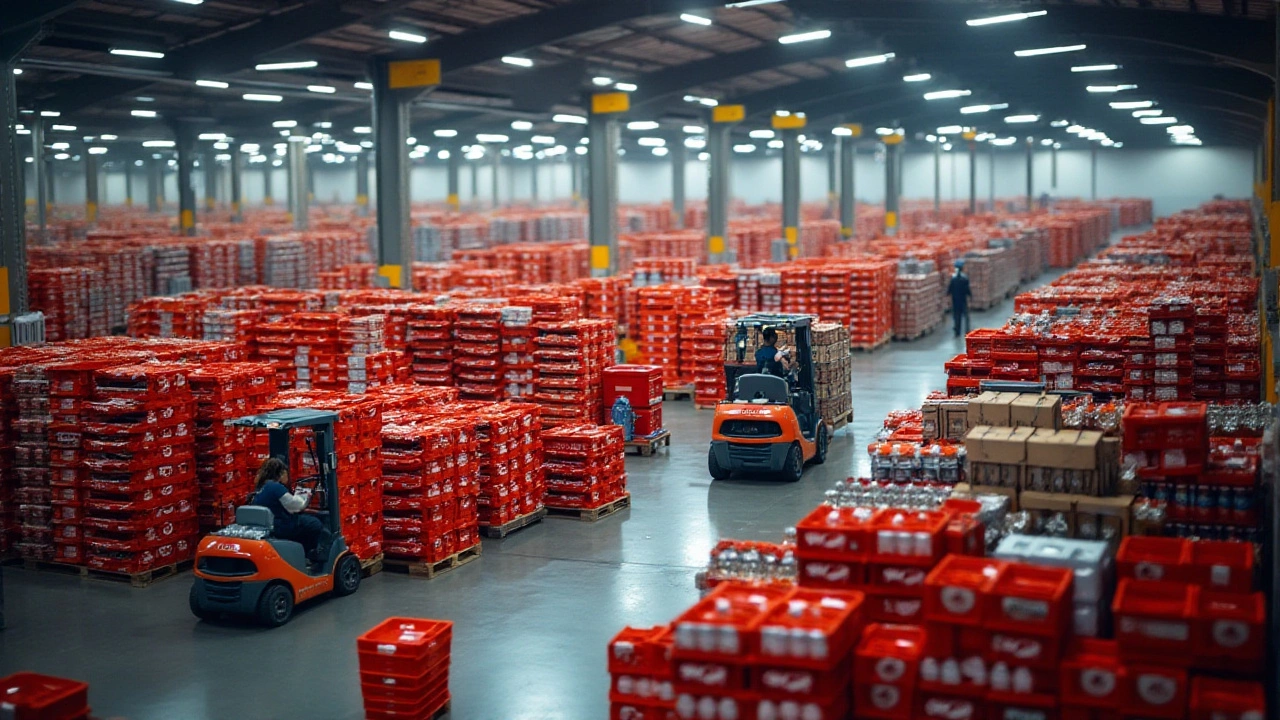Coca-Cola Logistics Insights: How the Beverage Giant Moves Millions of Bottles
If you’ve ever wondered how Coca-Cola keeps shelves stocked across India, you’re not alone. The brand moves billions of bottles every year, and the secret sauce is a mix of smart warehousing, efficient transport, and tight inventory control. Below we break down the main steps they use so you can see what works and maybe copy a few ideas for your own business.
Warehouse Strategy: From Factories to Regional Hubs
Coca-Cola doesn’t store everything in one big warehouse. First, the drinks are produced at large bottling plants near the raw material sources. From there, they go to regional distribution centers that sit close to major markets. This two‑tier system cuts down travel time and reduces the chance of stockouts. Each hub uses a Warehouse Management System (WMS) that tracks every pallet, tells workers where to pick, and alerts managers when a product is running low.
The WMS also helps with batch tracking, which is crucial for food safety. If a batch has an issue, the system can pinpoint exactly which stores received it, making recalls fast and accurate. For smaller businesses, a simple cloud‑based WMS can give similar visibility without the huge price tag.
Transportation: Mixing Modes for Speed and Cost
Once the bottles leave the regional hub, Coca-Cola uses a blend of trucks, rail, and even waterways where possible. Short‑range deliveries often go by temperature‑controlled trucks that can keep the product cool on the road. Longer hauls might switch to rail to save fuel and reduce emissions. The company uses a Transportation Management System (TMS) to plan routes, consolidate loads, and monitor delivery performance in real time.
One practical tip you can steal is using a TMS dashboard to see which routes are consistently late. Flag those routes, talk to your carrier, and tweak the schedule. Even a small change can shave off hours and improve customer satisfaction.
Another trick is the “milk run” approach – a single truck picks up and drops off at multiple stores in a loop. This maximizes load utilization and cuts down on empty miles. If you’re just starting out, try scheduling a few milk runs a week and watch the cost per mile drop.
Overall, Coca-Cola’s logistics success rests on three simple ideas: locate warehouses close to demand, use technology to see every bottle’s journey, and blend transport modes to balance speed and cost. You don’t need a global network to apply these principles – just a clear plan and the right tools.
Ready to level up your own supply chain? Start by mapping where your products are made and where they need to go, then pick a WMS and TMS that fit your budget. From there, keep an eye on data, fix the bottlenecks, and watch your delivery performance improve day by day.
How Coca-Cola Leverages Warehousing for Smooth Operations
Coca-Cola's extensive supply chain relies heavily on effective warehouse solutions to manage its global operations. Warehousing plays a crucial role in ensuring the timely distribution of products, helping maintain the brand's promise of availability. This article delves into the strategic use of warehouses by Coca-Cola, highlighting their importance in product storage, transportation, and the overall efficiency of supply chain management. Discover tips and insights into the warehousing methods employed by this iconic brand.
Read More